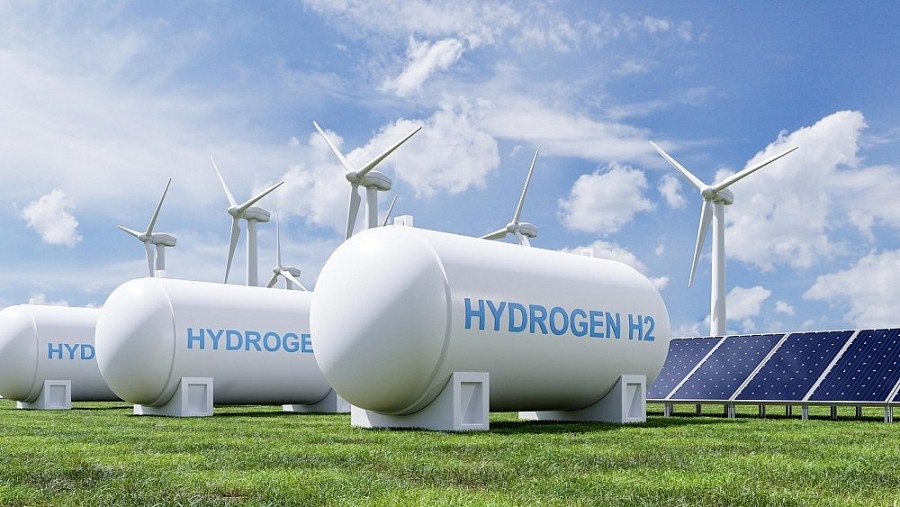Báo Bình Dương điện tử - www.baobinhduong.vn
Tổng Biên tập: LÊ MINH TÙNG
Phó Tổng Biên tập: HUỲNH MINH DÂN - NGUYỄN QUỐC LIÊM
Vietnam is likely to become a green hydrogen production hub in Asia in the future thanks to the huge potential it has for development of this clean energy source, said industry insiders.
Huge potential

Hydrogen is a clean energy source that is expected to help Vietnam meet climate action goals. (Illustrative image)
Vietnam is among the countries which boasts advantages in producing electricity from green hydrogen. It has huge renewable energy potential, preferable trade relations, and stable politics, along with favourable locations which are close to near major exporters in the Asia-Pacific region.
Renewable energy and a long coastline are the country’s great advantages when it comes to hydrogen production, said Huynh Thi Kim Quyen, director general of The Green Solution, a firm investing in Vietnam’s first green hydrogen.
Vietnam has a lot of potential for hydrogen production and it has the right to dream of becoming a green hydrogen production hub in Asia, she told a conference in Hanoi on February 22 to unveil the national hydrogen development strategy till 2030 with a vision towards 2050.
The strategy, which was recently approved by the Prime Minister, aims to develop Vietnam’s renewable energy-based hydrogen ecosystem, including production, storage, transportation, distribution, domestic use, and export. It will contribute to ensuring energy security and meeting national climate change goals, including the net zero emissions commitment by 2050.
According to a joint study by the UN Development Program (UNDP) Vietnam and the Vietnam Institute of Energy, Vietnam is expected to produce at least 11.49 million tonnes of green hydrogen by 2030, and the this figure could potentially increase to 18.78 million tonnes by 2050.
As the country has secured rapid growth over recent years, the economy is facing challenges in energy consumption. The annual increase in demand of 10% to 12% means greater supply is needed to prevent power shortages and to enhance energy security. Green hydrogen is widely considered to be the key to helping the country partly meet the energy consumption demand and achieve the net zero emissions commitment by 2050.
Implementation mechanism in need
Currently, the cost of producing green hydrogen is about US$2.5 - 6 per kg which is quite high, making it difficult for the electricity industry’s transformation process.
Under the approved Power Development Plan VIII, coal-fired power plants must gradually switch to using green, sustainable fuel sources. By 2050, these plants will no longer use fossil fuels in order to generate electricity and instead must switch completely to biomass and ammonia.
Ngo Hai Son, deputy director general of Electricity of Vietnam (EVN), said EVN is currently formulating a roadmap and solutions for energy transition, although the high price of hydrogen is a major problem. He therefore proposed that the Government move to support hydrogen power generation projects to ensure competition with other lower-cost power sources.
In addition, as this new field is being piloted for development, businesses and localities have recommended that management agencies build appropriate systems of standards and regulations in order to remove legal barriers.
To effectively implement this strategy, Minister of Industry and Trade Nguyen Hong Dien said his ministry would make recommendations and submit implementation plans to competent authorities in a bid to realise hydrogen development goals and solutions in the country.
He emphasised the role of international organisations in sharing experience, technology, and training human resources for this new energy field, which he said would help Vietnam access technology, human resource training, and production cooperation to bring hydrogen prices to that of an affordable level.
VOV